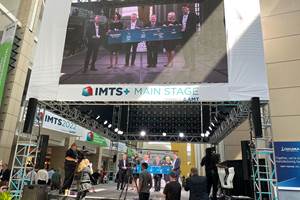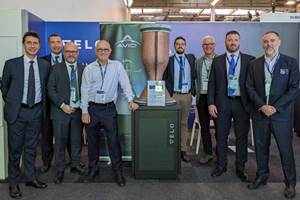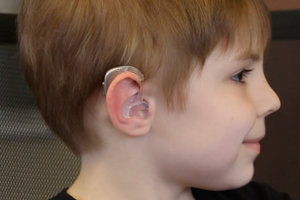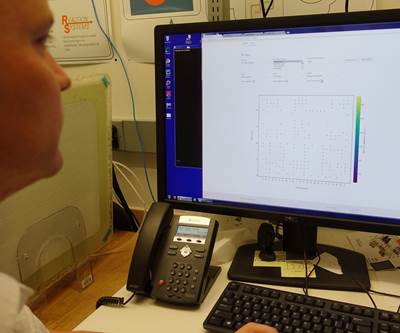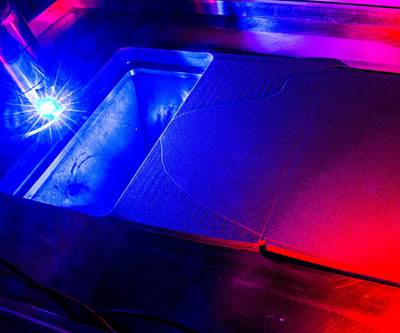Machine Learning for Invention Will Aid and Be Aided By AM
Neural networks that learn by trial and error—learning, in fact, like a child—will map the constraints of AM systems, allowing part designs to be optimized for those systems.
Editor’s note: We recently published a series of articles documenting how machine learning is being applied to additive manufacturing. Here is the introduction. Here are various applications already succeeding with machine learning. The article below, originally published in Modern Machine Shop, describes how machine learning is being applied to automate invention. But as you will read, this development, too, comes right back to additive manufacturing.
Neural networks are not scary.
Or so says Conrad Tucker, associate professor of engineering at Penn State University. Neural networks—artificial intelligence (AI) systems using advanced computing to aid in problem-solving—are tools that will eventually become accepted and widely employed by engineers. He is part of a team of researchers that recently won a $900,000 grant from the U.S. Department of Defense for a project that will train a computer system to invent. If this work realizes its aim, it will impact manufacturing because of the role manufacturing plays in invention.
Granted, if you need to claim something isn’t scary, then it must be kind of scary. But Dr. Tucker points out that we already interact with neural networks routinely. When our search engine returns give the web page we are looking for even after we mistyped the term, or when suggested purchase items on Amazon are eerily accurate to our tastes, this is the work of a neural network. Why can’t engineers use this same kind of network to obtain engineering designs that are eerily close to the optimal solution to a given problem?
The name of the project describes what it will do. GANDER aims to use “Generative Adversarial Networks for Design Exploration and Refinement.” The “adversarial” networks here are a generator and a discriminator. As the “generator” network proposes engineering ideas, the “discriminator” network shoots them down based on their fitness for physical reality. The generator then employs machine learning to grow from this feedback. Eventually, the generator will become so good at passing the discriminator’s reality tests that it will propose engineering designs that represent very effective solutions.
All the steps in realizing this vision are huge, because machine learning works through a mind-bogglingly large volume of data and calculations. Thus, the hope of automatic design is still a way off. Step one is to train the discriminator, and the grant funds this work. Many, many CAD models will be fed to a system that computationally subjects these part forms to a range of simulated physical environments to gage how the forms respond. Charting a comprehensive map of physical reality in this way might seem daunting, but Dr. Tucker says we have seen this kind of mapping before. Indeed, he lives with an active neural network that isn’t scary at all, but endearing.
“I have an 18-month-old son,” he says. “He is learning all about the world by exploring and testing it, and in part, he relies upon me to give him feedback. This is the same model at work: one agent generating ideas and the other agent constraining them.” Our computers can now follow the same model because they can now carry out the computations required at a useful speed.
The most immediate practical implications are liable to connect to additive manufacturing, Dr. Tucker says. 3D printing can help speed the networks’ learning by generating proposed forms for testing physically. And as part of mapping reality, the discriminator can map the constraints of the different 3D printing systems in order to propose designs that are optimized to these systems.
But the broader change for manufacturing will come in the way we invent. Today, we find our way to engineering solutions in much the same way as Dr. Tucker’s son, through physical exploration. We call these explorations “prototypes,” and a considerable share of the work of manufacturing is prototyping in some fashion. But in the future—maybe the far future, or maybe in 10 years—much of this work will be done computationally, with AI helping us to more quickly understand which ideas are ready for production.
Related Content
Large-Format “Cold” 3D Printing With Polypropylene and Polyethylene
Israeli startup Largix has developed a production solution that can 3D print PP and PE without melting them. Its first test? Custom tanks for chemical storage.
Read MoreFormnext Chicago Secures Premier Exhibitors for 2025 Event
Companies include some of the premier providers of additive manufacturing technologies as well as startup companies launching new materials solutions, capturing the entire spectrum of AM-related technologies.
Read MoreAvio Utilizes Velo3D Metal Printers for Developing Propulsion Systems
The Italian space propulsion innovator is installing the printers in its Colleferro, Italy, headquarters to produce mission-critical parts for its family of rocket engines.
Read More3D Printing Startup to Deliver Thousands of Custom Hearing Aids Over Next Five Years
Starting with a pilot program in Jordan, nonprofit 3DP4ME is developing workflows to 3D print hearing aid earmolds and prosthetics near the people who need them.
Read MoreRead Next
How Machine Learning Is Moving AM Beyond Trial and Error
A Colorado alliance has found the link between AM and AI. Using machine learning to map the formula for successful metal 3D printing, researchers aim to know the right parameters for any new part with few or no test builds.
Read MoreWhat GE’s Machine Learning Ecosystem Will Mean for Additive Manufacturing
At GE’s Global Research Center in upstate New York, engineers join forces to build a digital library of additive research.
Read More3D Printing Brings Sustainability, Accessibility to Glass Manufacturing
Australian startup Maple Glass Printing has developed a process for extruding glass into artwork, lab implements and architectural elements. Along the way, the company has also found more efficient ways of recycling this material.
Read More

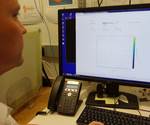










.png;maxWidth=300;quality=90)




